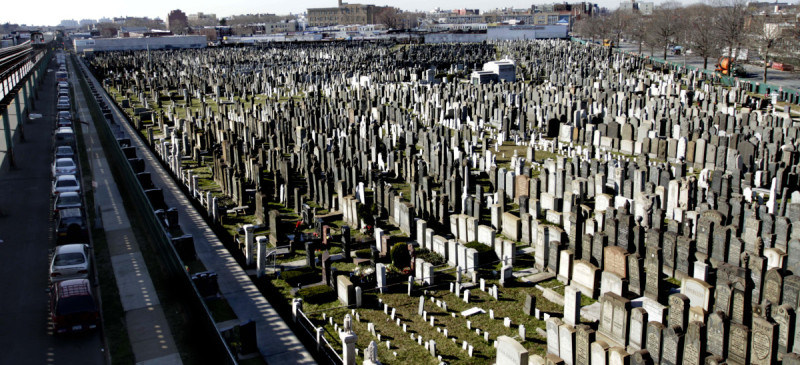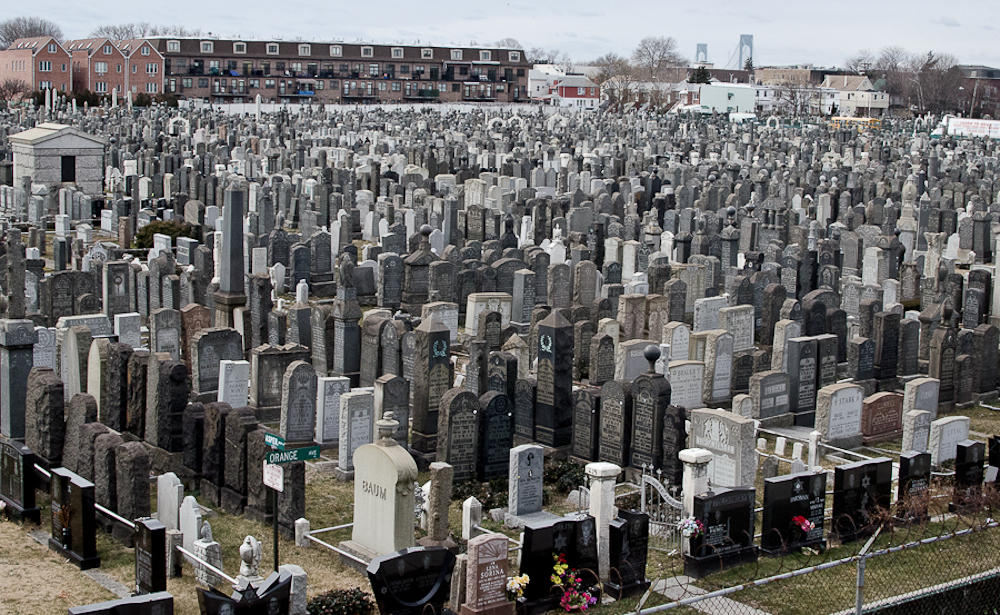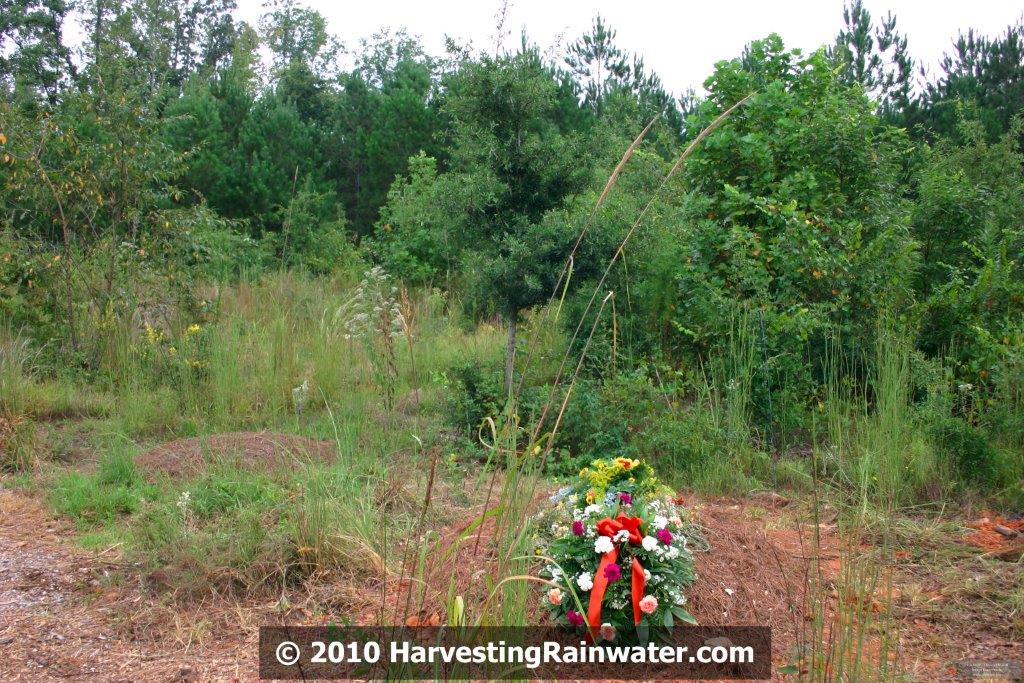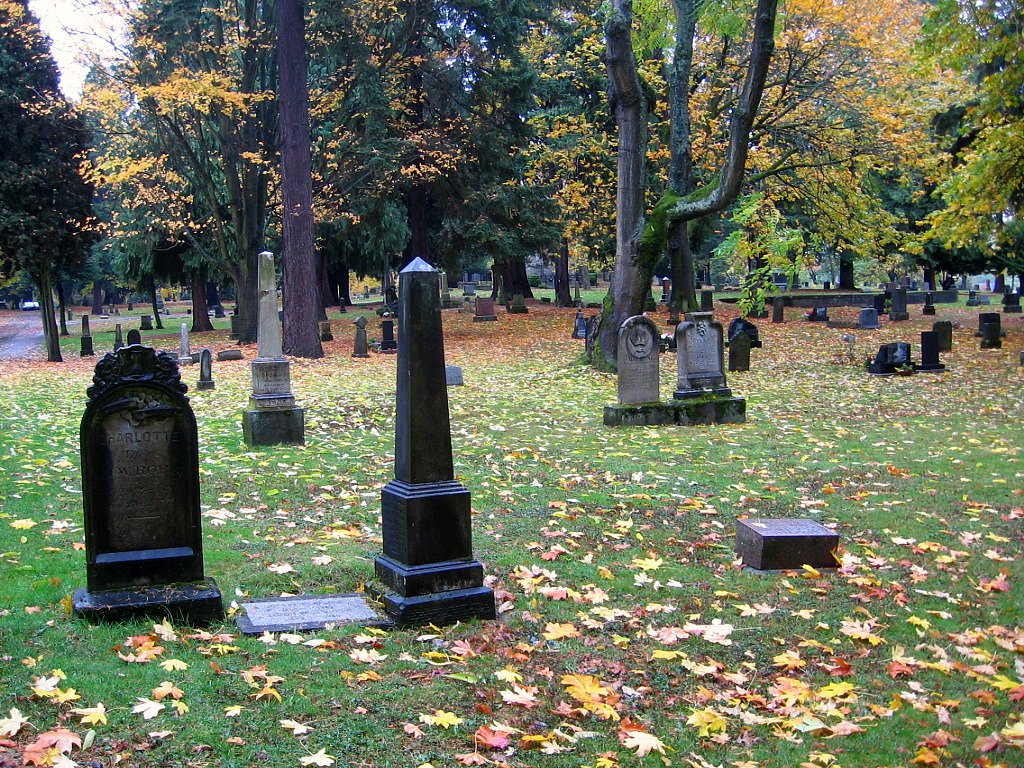It was interesting to see the multi-author story a few weeks back in the NY Times on “Too Many Bodies, Too Little Space,” which focused on the combination of traditional burial techniques and population booms making for shortage of cemetery real estate. The following views of Washington Cemetery in Brooklyn show that New Yorkers take density seriously in all facets.
The debate section included a number of interesting voices, such as Christopher Coutts, a professor of urban and regional planning from Florida State University discusses rapid urbanization and the environmental impacts of cemeteries, including some staggering facts:
The resources that go into the ground every year associated with a typical cemetery burial translate into: enough wood to frame over 2,300 single-family homes; sufficient steel to erect almost 15 Eiffel Towers; nearly four times as much concrete as was used to build the Pentagon; and a volume of embalming fluid that would overflow an Olympic swimming pool.
This is predicating changes to our burial options, particularly cremation, stacking plots, but even a space shot, for you meat puppets out there. Many folks make reference to the more natural burial techniques, such as Oliver Peacock from the UKs Woodland Burials, who posits that “Instead of Urban Sprawl, Create a Forest” where burials take place in natural areas, and the group “plants a tree at each grave, creating a woodland, a wildlife sanctuary and a nature reserve.” Charles Morris from the Green Burial Council International. expands this, saying, “Green burial also carries economic and spiritual benefits.”
Our transition from the use of cemeteries as a part of daily life to one that is moved to the margins is something worthy of exploration, as the cemeteries in our cities sometimes save remnant open space and habitat patches, but more often than not are continually overcrowding enclaves with mown grass that offers solace to the loved ones of the dead, but little else to the rest of the world.
Marc Jahr, author of a book i may check out “Deadville” which is about cemeteries around the globe, offers an interesting counterpoint, one that connects us with our mortality and history, and one that would be absent (perhaps?) without the reminders of cemeteries in our daily lives.
We need cemeteries. We could use the land for more profitable pursuits, but cemeteries save us from the fading of memory and history. They urge us to think about the lives that have been lived, in all their richness and mystery, and the lives that we lead. The physical space, the tombstones and mausoleums and stele satisfies a deeper communal need to remember and honor the past and remind us that our life’s moment is provisional and transient.
Many, including myself, can’t imagine Portland, for instance, without the amazing ‘Lone Fir Cemetery‘, (below) an 1850s era pioneer burial ground that does exactly what Jahr mentions above. Even better – unlike many privatized open spaces, it is open and accessible to the community members, which comes with the occasional idiot vandal but also connects us to our community in new (old) ways.
Scarcity is an interesting thing – and as urban dwellers are asked to chose between the plot in the city (either a new one or protecting the old), or perhaps more density, more parks, more usable spaces – maybe the current residents may be in for relocation? That isn’t to say that we won’t still have urban cemeteries, but the changes will mean more conversations like this – replete with bad titles like ‘Grave Concerns’ and the like.
One idea may just be to reconnect with the use of these areas as viable places to live our lives, not just places to be once we’re gone. Read the entire range of voices and let me know what you think.



